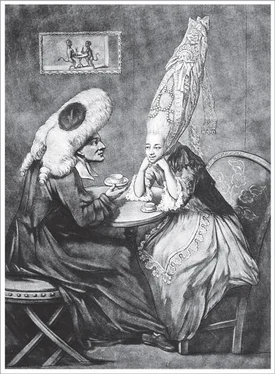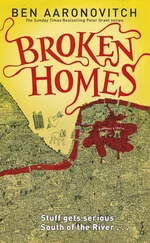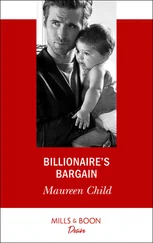Bill Bryson - At Home
Здесь есть возможность читать онлайн «Bill Bryson - At Home» весь текст электронной книги совершенно бесплатно (целиком полную версию без сокращений). В некоторых случаях можно слушать аудио, скачать через торрент в формате fb2 и присутствует краткое содержание. Жанр: Старинная литература, на английском языке. Описание произведения, (предисловие) а так же отзывы посетителей доступны на портале библиотеки ЛибКат.
- Название:At Home
- Автор:
- Жанр:
- Год:неизвестен
- ISBN:нет данных
- Рейтинг книги:4 / 5. Голосов: 1
-
Избранное:Добавить в избранное
- Отзывы:
-
Ваша оценка:
- 80
- 1
- 2
- 3
- 4
- 5
At Home: краткое содержание, описание и аннотация
Предлагаем к чтению аннотацию, описание, краткое содержание или предисловие (зависит от того, что написал сам автор книги «At Home»). Если вы не нашли необходимую информацию о книге — напишите в комментариях, мы постараемся отыскать её.
At Home — читать онлайн бесплатно полную книгу (весь текст) целиком
Ниже представлен текст книги, разбитый по страницам. Система сохранения места последней прочитанной страницы, позволяет с удобством читать онлайн бесплатно книгу «At Home», без необходимости каждый раз заново искать на чём Вы остановились. Поставьте закладку, и сможете в любой момент перейти на страницу, на которой закончили чтение.
Интервал:
Закладка:
Why it is that these two, out of all the hundreds of spices and flavorings available, have such a durable venerability is one of the questions with which we began the book. The answer is a complicated, dramatic one. I can tell you at once that nothing you touch today will have more bloodshed, suffering, and woe attached to it than the innocuous twin pillars of your salt and pepper set.
Start with salt. Salt is a cherished part of our diet for a very fundamental reason. We need it. We would die without it. It is one of about forty tiny specks of incidental matter—odds and ends from the chemical world—that we must get into our bodies to give ourselves the necessary zip and balance to sustain daily life. Collectively, those specks are known as vitamins and minerals, and there is a great deal—a really quite surprising amount—that we don’t know about them, including how many of them we need, what exactly some of them do, and in what amounts they are optimally consumed.
That they were needed at all was a piece of knowledge that was an amazingly long time coming. Until well into the nineteenth century, the notion of a well-balanced diet had occurred to no one. All food was believed to contain a single vague but sustaining substance—“the universal aliment.” A pound of beef had the same value for the body as a pound of apples or parsnips or anything else, and all that was required of a human was to make sure that an ample amount was taken in. The idea that embedded within particular foods were vital elements that were central to one’s well-being had not yet been thought of. That’s not altogether surprising, because the symptoms of dietary deficiency—lethargy, aching joints, increased susceptibility to infection, blurred vision—seldom suggest dietary imbalance. Even today if your hair started to fall out or your ankles swelled alarmingly, it is unlikely your first thoughts would turn to what you had eaten lately. Still less would you think about what you hadn’t eaten. So it was with bewildered Europeans who for a very long time died in often staggering numbers without knowing why.
Of scurvy alone it has been suggested that as many as two million sailors died between 1500 and 1850. Typically, scurvy killed about half the crew on any long voyage. Various desperate expedients were tried. Vasco da Gama on a cruise to India and back encouraged his men to rinse their mouths with urine, which did nothing for their scurvy and can’t have done much for their spirits either. Sometimes the toll was truly shocking. On a three-year voyage in the 1740s, a British naval expedition under the command of Commodore George Anson lost fourteen hundred men out of two thousand who sailed. Four were killed by enemy action; virtually all the rest died of scurvy.
Over time, people noticed that sailors with scurvy tended to recover when they got to a port and received fresh foods, but nobody could agree what it was about those foods that helped them. Some thought it wasn’t the foods at all, but just a change of air. In any case, it wasn’t possible to keep foods fresh on long voyages, so simply identifying efficacious vegetables and the like was slightly pointless. What was needed was some kind of distilled essence—an antiscorbutic, as the medical men termed it—that would be effective against scurvy but portable, too. In the 1760s, a Scottish doctor named William Stark, evidently encouraged by Benjamin Franklin, conducted a series of patently foolhardy experiments in which he tried to identify the active agent by, somewhat bizarrely, depriving himself of it. For weeks he lived on only the most basic of foods—bread and water chiefly—to see what would happen. What happened was that in just over six months he killed himself, from scurvy, without coming to any helpful conclusions at all.
In roughly the same period, James Lind, a naval surgeon, conducted a more scientifically rigorous (and personally less risky) experiment by finding twelve sailors who had scurvy already, dividing them into pairs, and giving each pair a different putative elixir—vinegar to one, garlic and mustard to another, oranges and lemons to a third, and so on. Five of the groups showed no improvement, but the pair given oranges and lemons made a swift and total recovery. Amazingly, Lind decided to ignore the significance of the result and doggedly stuck with his personal belief that scurvy was caused by incompletely digested food building up toxins within the body.
It fell to the great Captain James Cook to get matters onto the right course. On his circumnavigation of the globe in 1768–71, Captain Cook packed a range of antiscorbutics to experiment on, including thirty gallons of carrot marmalade and a hundred pounds of sauerkraut for every crew member. Not one person died from scurvy on his voyage—a miracle that made him as much a national hero as his discovery of Australia or any of his other many achievements on that epic undertaking. The Royal Society, Britain’s premier scientific institution, was so impressed that it awarded him the Copley Medal, its highest distinction. The British navy itself was not so quick, alas. Even in the face of all the evidence, it procrastinated for another generation before finally providing citrus juice to sailors as a matter of routine.*
The realization that an inadequate diet caused not only scurvy but a range of common diseases was remarkably slow to become established. Not until 1897 did a Dutch physician named Christiaan Eijkman, working in Java, notice that people who ate whole-grain rice didn’t get beriberi, a debilitating nerve disease, while people who ate polished rice very often did. Clearly some thing or things were present in some foods, and missing in others, and served as a determinant of well-being. It was the beginning of an understanding of “deficiency disease,” as it was known, and it won Eijkman the Nobel Prize in medicine even though he had no idea what these active agents were. The real breakthrough came in 1912, when Casimir Funk, a Polish biochemist working at the Lister Institute in London, isolated thiamine, or vitamin B 1, as it is now more generally known. Realizing it was part of a family of molecules, he combined the terms vital and amines to make the new word vitamines . Although Funk was right about the vital part, it turned out that only some of the vitamines were amines (that is to say, nitrogen-bearing), and so the name was changed to vitamins to make it “less emphatically inaccurate,” in Anthony Smith’s nice phrase.
Funk also asserted that there was a direct correlation between a deficiency of specific amines and the onset of certain diseases—scurvy, pellagra, and rickets in particular. This was a huge insight and had the potential to save millions of shattered lives, but unfortunately it wasn’t heeded. The leading medical textbook of the day continued to insist that scurvy was caused by any number of factors—“insanitary surroundings, overwork, mental depression and exposure to cold and damp” were the principal ones its authors thought worth listing—and only marginally by dietary deficiency. Worse still, in 1917 America’s leading nutritionist, E. V. McCollum of the University of Wisconsin—the very man who coined the terms vitamin A and B—declared that scurvy was not in fact a dietary deficiency disease at all, but was caused by constipation.
Finally in 1939, a Harvard Medical School surgeon named John Crandon decided to settle matters once and for all by the age-old method of withholding vitamin C from his diet for as long as it took to make himself really ill. It took a surprisingly long time. For the first eighteen weeks, his only symptom was extreme fatigue. (Remarkably, he continued to operate on patients through this period.) But in the nineteenth week he took an abrupt turn for the worse—so much so that he would almost certainly have quickly died had he not been under close medical supervision. He was injected with 1,000 milligrams of vitamin C and was restored to life almost at once. Interestingly, he had never acquired the one set of symptoms that everyone associates with scurvy: the falling out of teeth and bleeding of gums.
Читать дальшеИнтервал:
Закладка:
Похожие книги на «At Home»
Представляем Вашему вниманию похожие книги на «At Home» списком для выбора. Мы отобрали схожую по названию и смыслу литературу в надежде предоставить читателям больше вариантов отыскать новые, интересные, ещё непрочитанные произведения.
Обсуждение, отзывы о книге «At Home» и просто собственные мнения читателей. Оставьте ваши комментарии, напишите, что Вы думаете о произведении, его смысле или главных героях. Укажите что конкретно понравилось, а что нет, и почему Вы так считаете.












